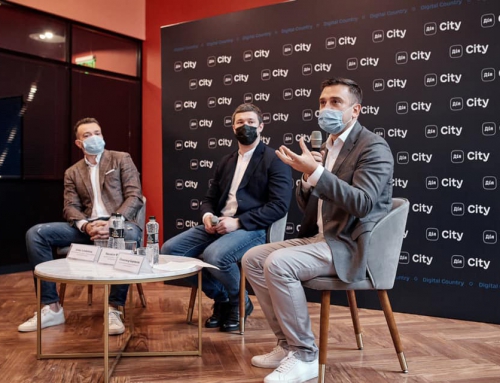Article written by Alex Bornyakov.
Co-owner of VertaMedia with more than eight years of experience in Internet marketing, digital video and advertising technologies.
Regardless of the sector you work in, it’s probable you’ve been to a trade show that went something like this: Walking through seemingly infinite rows of stands representing businesses you know – and many more you don’t – your outcome is mostly a few branded freebies. Afterall, who doesn’t need spare pens?
But given we’re all so time-poor, how can you ensure you make the most out of your time away from the office? My recent return from ad:tech New York – a key event for those working in advertising – got me thinking about all the hints and tips I can share with those who aren’t veterans of the trade show floor and which can be applied to any industry event.
I attend approximately 20 trade shows a year and, in my experience, they are a great opportunity for building relationships with prospects, learning from industry leaders, sizing up competitors, and giving your business a recognizable face – but only with the right preparation. To make attending worthwhile, it’s essential to treat each show like a potential client meeting, rather than just an event to show up at.
If you’re about to attend your first trade show or haven’t found them to be successful in the past, here are some of the lessons I’ve learned for maximizing your time at industry events.
Choose Your Trade Show Wisely
It’s easy to board the bandwagon and end up at a show that doesn’t benefit your business, so investigate before you book. A big show might be the most prestigious in your industry, but will your client base be there? Check out websites and trade publications; you might find another event presents a better chance of connecting with your specific prospects. During the startup years of my business, I often found that larger trade shows were the most beneficial for finding leads and investors while smaller, niche events were useful for research purposes when I was taking my business in a new direction.
Build A Tailored Game Plan
Even if two trade shows attract the same audience, their functions will never be the same. Your strategy shouldn’t be either. For example, in digital marketing, there are two flagship shows with very individual styles: Cannes Lions Innovation and dmexco. While Cannes Lions is fluid and characterized by impromptu meetings that regularly run late, dmexco is focused on business meetings and operates on a much earlier schedule. If you want to extract the full benefit of each show, you need to understand its particular system and build a bespoke strategy to fit. However, keep in mind that it is important to maintain a degree of flexibility with your arrangements. No matter what preparation you undertake ahead of an event, a delayed flight or severe weather conditions can significantly impact your plans; I have experienced both in the past.
Allocate Your Time Carefully
If you’ve ever been to a music festival and spent more time walking around than watching the acts you came to see, you’ll know the value of creating a precise schedule for large events. Be detailed with your trade show planning — make a list of the stands, presentations and workshops you want to see, in what order and how long it will take to move between them. Then add extra time for getting lost. This doesn’t mean you should refuse last-minute meetings if they are of value; there is always time for new opportunities. But just ensure accepting them doesn’t mean sacrificing anything else.
Don’t Leave Leads To Chance
Just because an event is focused on your particular industry niche doesn’t mean everyone you meet is a potential client. Generating leads at trade shows is a science and to get the best results you need to ensure all key variables are considered. Before the show, define what exactly you want to achieve and how you will do so: What kind of businesses are you targeting? Which elements of your offering should your stand emphasize to capture their attention? Once you’re there, keep that goal in mind when making connections. It’s great to expand your network, but more time spent chatting with contacts who are not likely to become prospects means less time to engage with those who are interested in your offering.
Sow The Seeds For Follow-Ups
You’ve stuck to your schedule, made several promising new contacts and have a stack of business cards to prove it — but which conversation did you have with whom? How are you going to ensure your post-event messages stand out if you can’t recall the unique details needed to personalize them? Once more, the solution to this issue is preparation: As soon as the discussion is over, write what you want to follow-up on their business card or a lead form. I like to prepare lead forms before I attend an event – either in a digital format for my tablet or printed. When I meet a new lead, I fill out the forms with their basic information and it helps to refresh my memory once I’m back in the office. It’s also worth giving your new contacts a helping hand by noting what you talked about on your own business card — a tactic that will make you stand out from the crowd and may even be the start of a lasting connection.
There is no denying that our existence is becoming increasingly digital, but the enduring popularity of trade shows illustrates the continued importance — and power — of building connections in person. Yet just being there isn’t enough. Over the years I’ve learned that to maximize the opportunities afforded, a well-timed, comprehensive, and precise strategy is key. If all you are prepared to do at trade shows is attend and hope for the best, don’t be surprised if what you get in return falls below your expectations.








Оставить комментарий
You must be logged in to post a comment.